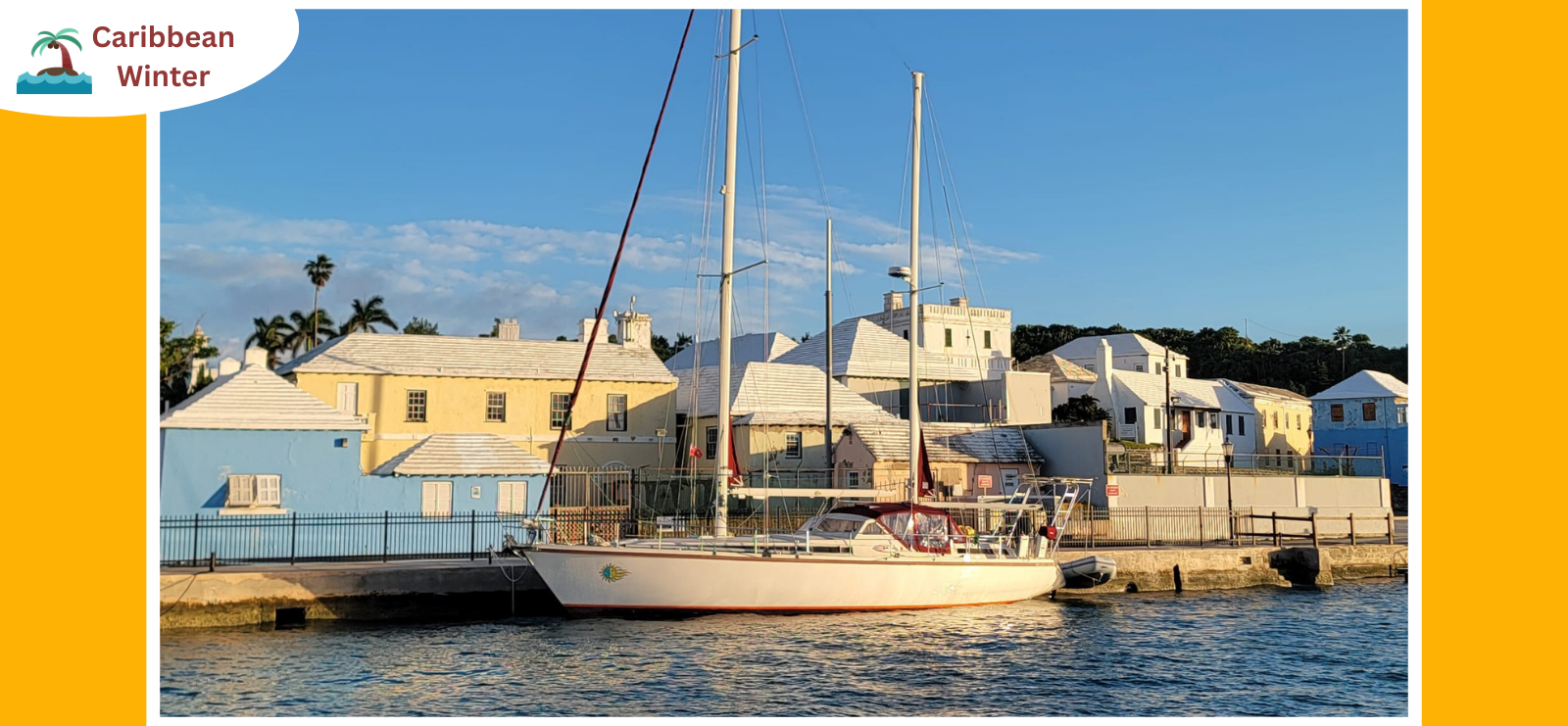
Date : 26 Dec 2024
It’s dark and rainy in the anchorage. Despite the last Super Moon of the year rising tonight, the sky is pitch black due to heavy cloud cover and continuous rain. Over the past 24 hours, we’ve swung another 180 degrees on the anchor, and within the next 8 hours, as backing winds reach 30+ knots between 1 a.m. and 5 a.m., we’re expected to swing another 180 degrees. While the anchor is presumably set in a sandy clay bottom, there is a likelihood of it twisting out of its grip after being repeatedly swung around on itself. Like reefing sail, if you have to think about it, it’s time to address it and reset the anchor.
While our posts often showcase the dreamy, beautiful aspects of sailing life and cruising adventures, the reality is often far less glamorous. Since anchoring in Bermuda a few weeks ago, the “To-Do” list has grown steadily, with daily tasks taking up much of our time and schedule.
The Reality of Landfall
First Task: Laundry!
Upon arriving after just four days at sea, every piece of fabric on board—bed linens, hand cloths, clothing—was a breeding ground for bacteria, saturated in bodily fluids, salt air, salt water, diesel fuel, engine oil, coolant, and more. This is always the first chore after landfall, setting the tone for the many tasks ahead. Second is, when available, a land shower!
The “To-Do” List at Anchor
Turnbuckles and Mast Fixtures
Turnbuckles secure and tension the standing wire rigging of the mast. Before departure, the rigging was tuned, but turnbuckles were left unsecured for adjustment under sail. Heavy seas during the voyage delayed this adjustment, necessitating re-tuning at anchor between passing weather fronts. While at it, we have to climb the mast to replace the wind sensor arm that failed within hours of departure 4 days earlier.
Gate Lashings
This marlinspike project involves eye-splicing dyneema line to be installed as lower lifelines at the port and starboard gates. This can wait until a sunny, calm day to make for a relaxing afternoon activity.
Lewmar Hatch Handles
Mid-ocean, during a sudden lurch of the boat in heavy seas, one of the main salon hatch handles broke. This allowed water spray to seep into the cabin for the remainder of the trip, saturating everything near the hatch. Thankfully, an extra set of these handles is in our stores of extra parts, and when the rain forecast is no longer, we can address this repair.
Dodger Windows
The weatherstripping around the dodger windows, normally watertight, failed under the onslaught of head seas during the last 30 hours of the voyage. Water streamed through, ruining cockpit dashboard items like logbooks and chargers. Replacing this specialized weatherstripping will require a bus trip to source materials in Hamilton.
Sump/Bilge
Neglected maintenance of the bilge sump reached a breaking point, requiring a full cleaning to eliminate odors. This involved manually pumping out fluids, scrubbing the sump, and cleaning components—a messy, time-consuming process.
Ground Solenoid
Some repairs require outside help. Thankfully, the close-knit anchorage community includes skilled marine technicians. A fellow sailor offered to address this issue in exchange for dinner and drinks—a welcome solution!
Coolant
While motor sailing on the trip down, the engine temperature alarm sounded at 4 a.m., necessitating immediate troubleshooting. The culprit was a loose coolant flush valve, draining all coolant. Improvising with some extra pre-mixed coolant onboard, and some fresh water, allowed us to continue mid-ocean. Now, at port, we can purchase the proper amount of pre-mix coolant, and a sufficient back-up amount. Another item to put on our day trip to Hamilton for extra parts and supplies.
Dinghy Painter
A fortunate discovery revealed that the line securing the dinghy was about to fail. Replacing it required a quick trip to a nearby beach, avoiding what could have been a costly loss.
Chart Plotter Settings
Recent upgrades to the navigation system caused confusion during the voyage. A review and recalibration of the chart plotter are now necessary before departing Bermuda.
Life at Anchor
Since arriving in Bermuda, cold fronts have rolled through every 48 hours, bringing rain, shifting winds, and gusts up to 35 knots. Anchoring amidst these conditions requires constant vigilance. Drag alarms, electronic plotters, and regular checks are essential to prevent collisions or grounding.
The anchorage itself is fluid, with boats regularly coming and going. Dragging anchors can lead to dangerous situations, particularly in tight quarters. Auxiliary lighting helps identify positions, but the responsibility lies with each sailor to ensure safety.
The Beauty and Challenge of Cruising
While Bermuda remains a favorite landfall, as the season progresses, the weather conditions continue to deteriorate. As woolen blankets and fleeces become more ordinary, we’re reminded of the duality of cruising life: the stunning sunsets and celestial displays balanced by the harsh realities of maintenance, weather, and sleepless nights; and, the nearing of planning our next leg towards a more Tropical environment.
These ”realities” however are shadowed by the sense of accomplishment that comes from a successful voyage, the vibrant community of fellow sailors, and the awe-inspiring environment that we immerse ourselves in under sail. Cruising teaches respect for the sea and its unpredictable nature while fostering connections with those who share this extraordinary lifestyle.